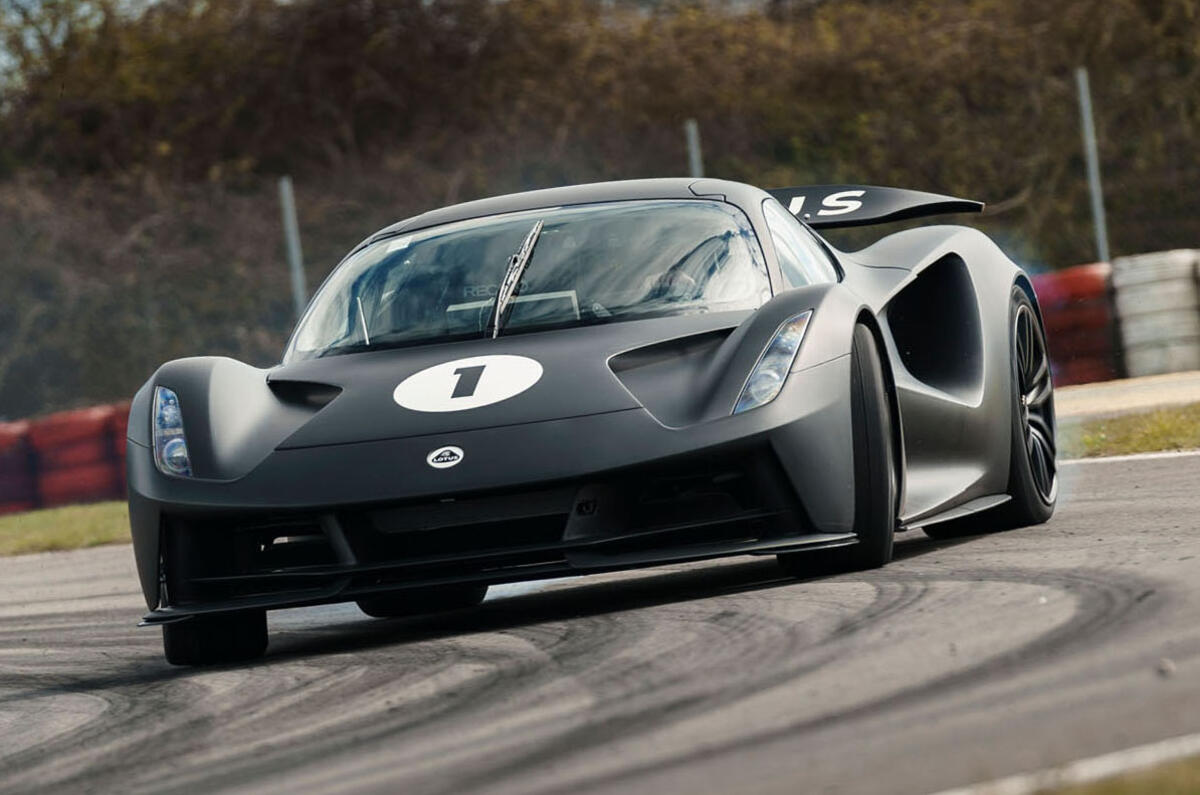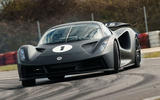The few neighbours of Lotus’s Hethel track have grown used to the noise of high-performance powerplants being wrung out over the years, from Ford DFVs through to the supercharged Toyota V6s that power the senior end of the company’s present line-up.
But none has sounded anything like this. Inside its cockpit, the Evija prototype is far from silent, a muscular electrical hum overlaying the rumble of the track under the tyres and the chattering of the suspension working. Plus, as speed builds, the rush of the increasing air pressures on the outside of the swoopy bodywork. But from outside, it is almost freakishly quiet compared with the hypercar alternatives in this elevated part of the market, whistling past with the sound of little more than displaced air, like a high-speed electric train.
This isn’t surprising, of course – and the finished car will have an artificial pedestrian-warning ‘soundscape’ based on the noise of a Type 49 at low speed. But it does make more of a difference than you might expect it to, especially when compared with the experience of the lesser EVs, whose silence often feels golden. The Evija’s lack of sound and fury denies it much of the visceral thrill that normally comes from a four-figure power output, the lack of rising revs or gearchanges removing those “that’s quick” reference points for both occupants and onlookers.
Big engines are all about drama. Even the most potent electric powertrains are defined in large part by their lack of it. For the driver, that means the Evija’s ability to engender startling speedometer numbers in minimal time comes as even more of a surprise.

The prototype Evija definitely isn’t short on performance, even if it isn’t playing with quite a full deck. The development car for my test drive is limited to 1578bhp – the production Evija will have over 1972bhp (2000PS) – and has its top speed restricted to 140mph. It also lacks the regenerative braking, active aerodynamics, active suspension and torque vectoring of customer-spec versions, as well as stability control and traction control. Its all-wheel drive system also runs a fixed torque split – 77% of effort going to the rear, 23% to the front – but the ability to juggle this will come later. “We always get the basics right,” says Gavan Kershaw, Lotus’s long-serving handling guru and now, formally, director of attributes. “That means a base specification we then build on.”






































Join the debate
Add your comment
Spinning in his grave? Chapman was always trying to get Lotus upmarket to where there was more money and prestige
Oh dear, this thing seems to have become very troubled. The was the messy wrangling with Williams and then this review. The problem, as others have said, is that it has 2,000 bhp – it might as well have 1,500 or 3,000 to be equally irrelevant. This seems so typically Lotus, engineer something and hope the customers will come. By admitting that not even 130 may step forward they have a real PR issue. As Jaguar found with the XJ220, when a car has a whiff of being less than desirable then customers will bail. I'm betting the odds of them selling 130 just went backwards today.
Lotus, it's just a name, right?, there's nothing lotus in the cars that bare that famous name, so this car is heavy, it has 2000 BHP for heavens sake!, a fancy suspension setup, it'll probably handle well too, the days of the less than a 1000kg sports car are gone, with the rise of EV power, we've gotten access to amazing amounts of power and torque,and it's clean too!, and it would be nice if the tech on cars like this filtered down to the everyday stuff like you and I drive.